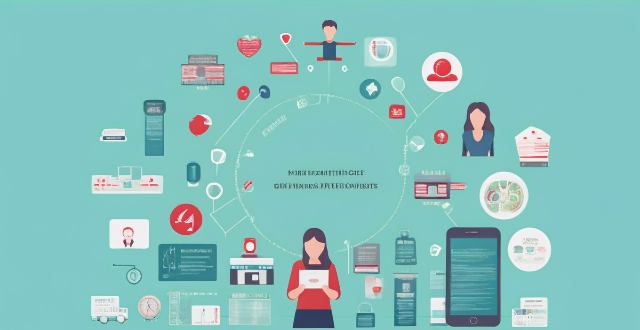Problem Approach

How do I approach complex math problems and find solutions ?
When facing complex math problems, it's essential to have a systematic approach that helps you break down the problem into manageable parts. Here's a structured way to tackle such challenges: 1. Understand the Problem: Read the problem carefully and identify key information and variables. Clarify any doubts or ambiguities before proceeding. 2. Plan Your Approach: Select an appropriate strategy based on the type of problem (algebraic, geometric, etc.). Outline the steps you will take to solve the problem and estimate the difficulty and time required for each step. 3. Execute Your Plan: Start with the first step of your plan, work through each step methodically, making sure each calculation is correct. Use scratch paper to keep your work organized. 4. Review Your Work: Re-read the original problem to ensure your solution addresses what was asked. Verify your answer makes sense in the context of the problem and double-check your calculations for accuracy. 5. Seek Help if Needed: If you are stuck, try approaching the problem from a different angle. Discuss the problem with peers or a teacher to get new insights. Utilize online resources or textbooks for additional explanations and examples.

What steps should I follow when solving a word problem in mathematics ?
Solving word problems in mathematics can be challenging, but by following a step-by-step approach, you can simplify the process and increase your chances of finding the correct solution. The first step is to read the problem thoroughly, identifying all relevant information and understanding what is being asked. Next, plan your approach by deciding on a strategy, breaking down the problem into smaller parts if possible, and drawing a diagram to visualize the problem. After that, solve the problem by writing down the equations or expressions you will use, solving them step by step, and checking your work to make sure your answer makes sense and satisfies the original conditions of the problem. Finally, write your answer in a clear and concise manner, explain how you arrived at it if necessary, and check your work again to make sure you didn't make any careless mistakes. By practicing these steps, you should be able to solve most word problems in mathematics.

How often should parents evaluate and adjust their homeschooling approach ?
The text provides a guide for parents on how to evaluate and adjust their homeschooling approach. It suggests evaluating the homeschooling approach regularly, focusing on key areas such as curriculum, teaching methods, progress tracking, socialization, and mental health. Based on evaluation results, parents may need to make adjustments such as changing curriculum, modifying teaching methods, setting realistic goals, increasing socialization opportunities, or addressing mental health concerns. The text emphasizes the importance of flexibility and prioritizing the child's happiness and well-being.

What resources are available to help me practice and master math problem-solving ?
To master math problem-solving, various resources are available, including online platforms like Khan Academy and Mathway, books such as "How to Solve It" by Polya, and video tutorials from YouTube channels like Numberphile. Practice worksheets from websites like Math Drills and IXL Math can also aid in skill development. Regular and consistent use of these resources can enhance one's ability to solve complex math problems and build a strong mathematical foundation.

How can mind mapping improve creativity and problem-solving skills ?
Mind mapping is a tool that enhances creativity and problem-solving skills by providing a visual way to organize information. It stimulates brainstorming, enhances visualization, and promotes collaboration for creative thinking. Mind mapping also aids in problem-solving by identifying core issues, providing clarity and focus, and facilitating decision making.

How do project-based learning and problem-solving activities fit into innovative teaching methodologies ?
Innovative teaching methodologies emphasize project-based learning (PBL) and problem-solving activities to engage students, foster critical thinking, and develop practical skills. PBL involves students in complex, meaningful projects that connect classroom learning with real-world scenarios, promoting deeper understanding, skill development, and motivation. Problem-solving activities challenge students to identify issues and find effective solutions, enhancing their critical thinking, decision-making, and resilience. Integrating PBL and problem-solving into innovative teaching involves identifying key concepts, designing relevant projects, incorporating problem-solving elements, providing resources, facilitating collaboration, scaffolding instruction, reflecting and evaluating, and assessing holistic performance. This approach creates a dynamic learning environment that prepares students for future challenges and fosters a love of lifelong learning.

How does the European Union approach climate change through its legal frameworks ?
The European Union has been at the forefront of addressing climate change through its legal frameworks. It has adopted a comprehensive and integrated approach that includes legislation, regulations, directives, and other legal instruments to mitigate greenhouse gas emissions and adapt to the impacts of climate change. This approach is based on the principles of sustainable development, prevention, polluter pays, and subsidiarity. Some key legal frameworks for climate change in the EU include the European Climate Change Programme, Emissions Trading System, Renewable Energy Directive, Energy Efficiency Directive, and Climate Action and Resilience Package. The implementation and enforcement of these legal frameworks are ensured through monitoring and reporting, evaluation and review, and enforcement actions. Despite facing challenges such as political will, technological innovation, and international cooperation, there are also opportunities for the EU to further strengthen its approach to climate change through legal frameworks by exploring innovative financing mechanisms, collaborative governance, and global leadership.

Does exercise influence executive functions, such as decision-making and problem-solving ?
Exercise has a positive impact on executive functions, including decision-making and problem-solving. Regular physical activity can enhance cognitive functioning, risk assessment, self-control, creative thinking, working memory, and attention, leading to improved performance in these areas. Incorporating exercise into your lifestyle can benefit both your physical and cognitive health.

How does the idea of 'no pain, no gain' affect people's approach to exercise ?
The "no pain, no gain" philosophy significantly influences people's attitudes toward exercise. While it can boost motivation and discipline, it also poses risks like injuries and overtraining. This mindset may lead to a narrow focus on immediate results, potentially neglecting long-term health goals. It can also negatively affect mental health by causing stress and burnout. Adopting a balanced approach that emphasizes enjoyment, gradual progression, and self-awareness can help achieve fitness goals sustainably without the drawbacks associated with "no pain, no gain."

How can I develop better number sense and estimation skills for problem-solving ?
Number sense is a crucial skill for effective problem-solving, involving an intuitive understanding of numbers and their relationships. It's important for efficiency, flexibility, and confidence in handling numerical tasks. To improve your number sense and estimation skills, practice rounding and estimating, use benchmark numbers, work with different representations, engage in mental math exercises, analyze mistakes, and seek out challenging problems. Consistent practice and real-world applications are key to developing a more intuitive understanding of numbers and enhancing problem-solving abilities.

How can I improve my problem-solving skills in geometry ?
Improving problem-solving skills in geometry involves understanding fundamentals, practicing regularly, analyzing mistakes, learning multiple solution methods, using visualization techniques, collaborating with peers, applying real-world scenarios, and staying updated with resources. Consistent effort and a proactive approach are key to success.

Is social media addiction a real problem, and how can it be addressed ?
Social media addiction is a growing problem with significant impacts on mental health, relationships, and productivity. Recognizing the signs of addiction, such as excessive use or neglecting important activities, is crucial for addressing the issue. The negative effects include mental health issues, relationship problems, and reduced productivity. To combat social media addiction, individuals can set limits on usage, find alternative activities, practice mindfulness, and seek professional help if needed.

How do you troubleshoot common issues with AC stepping motors, such as missing steps or low torque ?
Troubleshooting common issues with AC stepping motors involves addressing problems such as missing steps or low torque. This is done by checking the power supply, examining the drive system, analyzing mechanical components, evaluating control signals, and considering environmental factors. It is important to approach the problem methodically, starting with basic checks before moving on to more complex diagnostics.

What are some effective strategies for solving algebra problems ?
In the article, "Effective Strategies for Solving Algebra Problems," the author outlines a five-step process to solve algebra problems effectively. First, read and understand the problem, identify unknowns, and visualize it. Second, plan an approach by selecting a strategy, breaking down complex problems, and estimating answers. Third, execute your plan by writing equations, simplifying them, and solving for variables. Fourth, check your work by substituting back into the original equation, evaluating estimations, and looking for errors. Finally, review and reflect on your steps, strategies used, and practice similar problems to solidify understanding. Following these strategies can increase confidence and success in solving algebra problems.

How can I detect and prevent network intrusions ?
To detect and prevent network intrusions, implementTo detect and prevent network intrusions, implement approach that includes: conducting training employees on security best practices, and regularly updating software and firmware. This comprehensive approach can significantly reduce the risk of network intrusions and protect an organization's valuable assets.

What skills do workers need to develop to adapt to automation ?
Automation is transforming the workplace, and workers need to develop a set of skills to adapt to this change. These skills will help them not only to coexist with automation but also to thrive in their careers. Here are some key skills that workers should focus on: 1. Technical Proficiency - Programming and Coding: Understanding basic programming concepts can be beneficial across various industries. - Digital Literacy: Being able to use digital tools effectively is essential for most jobs. - Data Analysis: The ability to analyze data and draw insights is increasingly valuable. 2. Critical Thinking and Problem-Solving - Analytical Thinking: The capacity to dissect complex problems and identify solutions is crucial. - Creative Thinking: Innovation is often required to find new ways to approach tasks. 3. Adaptability and Flexibility - Learning Agility: The willingness and ability to learn new skills quickly. - Change Management: Being comfortable with change and adapting to new processes. 4. Emotional Intelligence and People Skills - Communication: Strong communication skills are necessary to collaborate effectively. - Empathy: Understanding and relating to colleagues' needs and perspectives. 5. Continuous Learning Mindset - Lifelong Learning: Embracing ongoing education to stay relevant in a changing job market. - Self-Motivation: The drive to seek out new knowledge and skills without external prompts. 6. Interdisciplinary Knowledge - Cross-Functional Understanding: Having knowledge across different areas can lead to more well-rounded problem-solving. 7. Business Acumen - Understanding Business Context: Knowing how your work impacts the broader business goals. - Project Management: Managing tasks and timelines efficiently. 8. Leadership and Influence - Team Leadership: Leading and motivating team members toward common goals. - Influence: Persuading others and affecting change in a positive manner. 9. Cognitive Flexibility - Mental Flexibility: Being able to switch between different tasks or think about different concepts. 10. Resilience - Stress Tolerance: Handling pressure and challenges without losing effectiveness. - Growth Mindset: Viewing failures as opportunities to learn and grow.

What role do carbon offsets play in a company's CSR approach to addressing climate change ?
**Summary:** The text discusses the role of carbon offsets in corporate social responsibility (CSR) strategies aimed at mitigating climate change. Carbon offsets, defined as investments in emission reduction projects that go beyond legal requirements, help companies counterbalance their operational emissions. Implementing carbon offsets can aid companies in achieving emission reduction targets, investing in sustainable projects, engaging stakeholders, managing risks related to environmental regulations, and fostering innovation. Key steps in implementing a carbon offsetting program include conducting an emission audit, selecting suitable offset projects, integrating offsets into the business model, ensuring transparency in reporting, and engaging stakeholders. By incorporating carbon offsets into their CSR strategies, companies can contribute to combating climate change while enhancing their reputation and potentially reaching new markets.

What are some innovative examples of climate-responsive architecture in urban areas ?
Climate-responsive architecture is a design approach that aims to minimize the environmental impact of buildings by integrating them harmoniously with their natural surroundings. This approach takes into account local climate conditions, such as temperature, humidity, wind patterns, and solar radiation, to create energy-efficient and sustainable structures. Here are some innovative examples of climate-responsive architecture in urban areas: The Bullitt Center, Seattle, USA; The 8 House, Melbourne, Australia; The Parkview Green Building, Singapore; The KfW Westarkade, Frankfurt, Germany.

What are the benefits of adopting a climate leadership approach in business ?
Adopting a climate leadership approach in business is crucial for several reasons. Here are some benefits: 1. **Enhanced Reputation and Brand Image**: Companies that prioritize sustainability often enjoy enhanced reputations among consumers, investors, and the general public. This can lead to increased brand loyalty and customer satisfaction. 2. **Risk Management and Resilience**: A proactive approach to climate change helps businesses identify and mitigate potential risks associated with extreme weather events, supply chain disruptions, and regulatory changes. Investing in renewable energy sources, efficient infrastructure, and sustainable practices can make businesses more resilient to the impacts of climate change. 3. **Financial Performance and Cost Savings**: Implementing energy-efficient technologies and processes can lead to significant cost savings on utility bills. Many investors now prefer to invest in companies with strong environmental credentials, making it easier for these businesses to secure funding. Embracing climate leadership can also spur innovation, leading to the development of new products, services, or processes that generate additional revenue streams. 4. **Attracting and Retaining Talent**: Younger generations are passionate about working for companies that share their values on sustainability and social responsibility. Offering a workplace culture that aligns with personal values can improve employee satisfaction and reduce turnover rates. 5. **Compliance with Regulations and Reporting Requirements**: As governments around the world implement stricter environmental regulations, adopting a climate leadership approach ensures businesses stay ahead of these changes. Many stakeholders, including investors and consumers, now expect companies to report on their environmental impact. Being proactive in this area simplifies reporting requirements and demonstrates transparency.